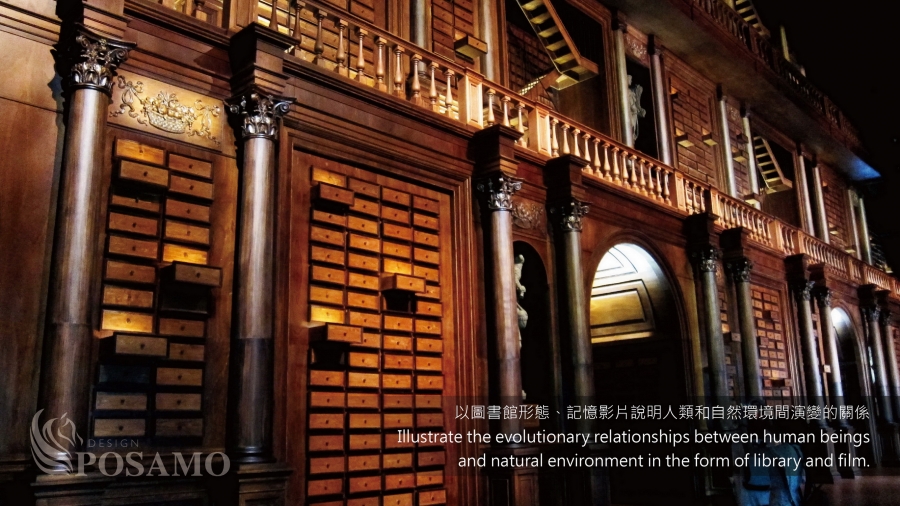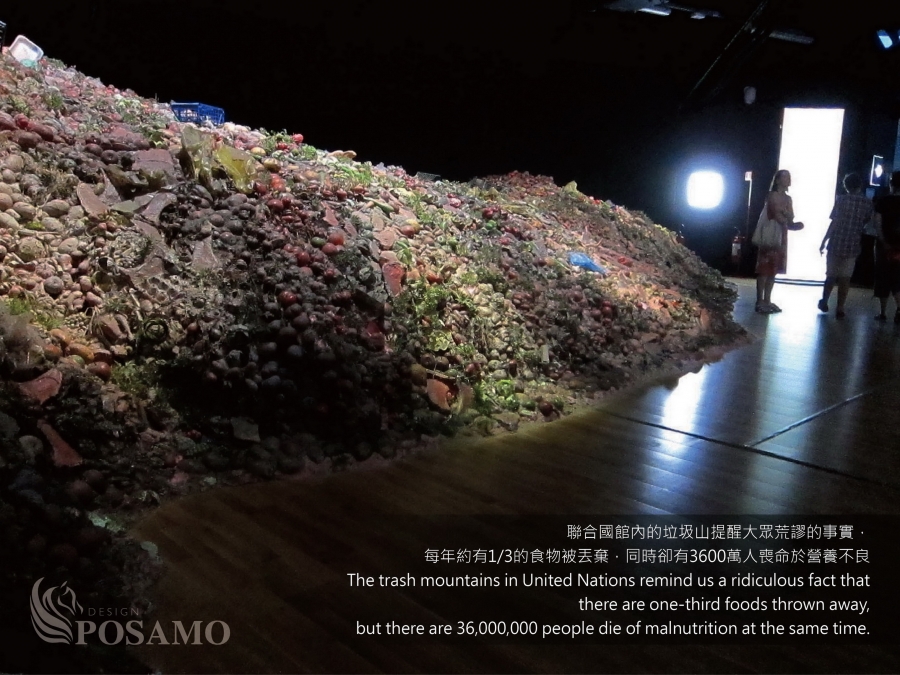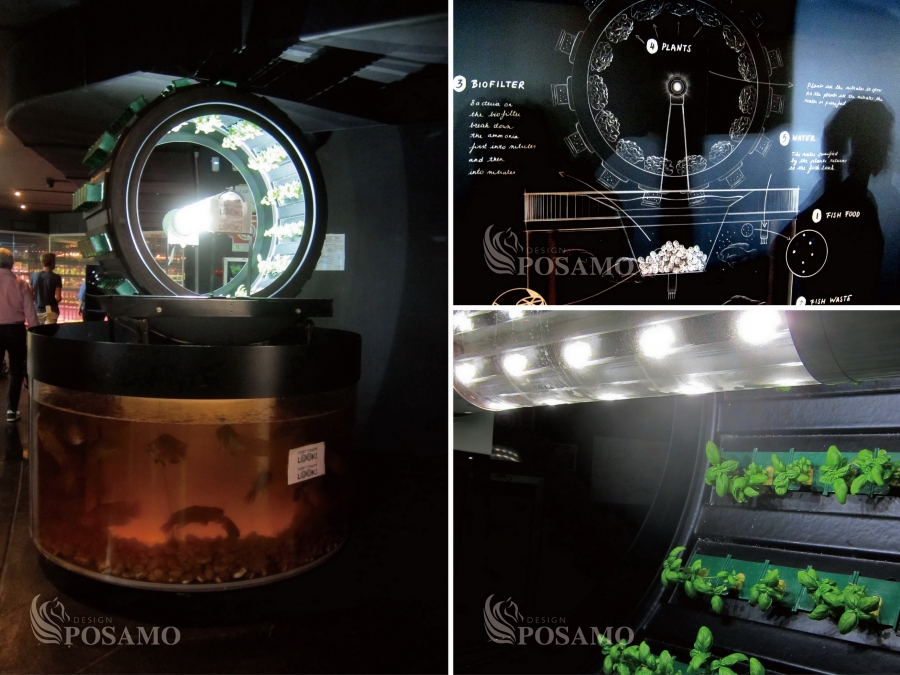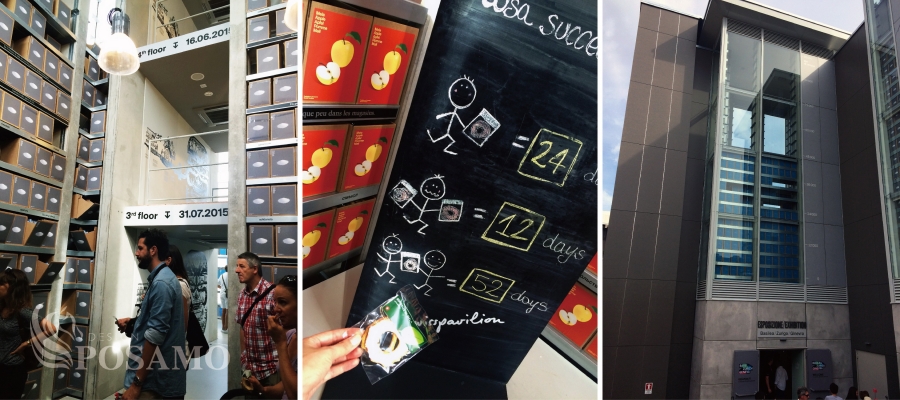Follow the crowds into the Expo Milano 2015 in the bright sunny day in the morning; the attractive and fascinating exhibitions come into view. There are one hundred and forty pavilions in this Expo, including fifty-four countries, other organizations, and enterprises. The writer asks himself what he hopes to see in limited time, what he can get after the all-day visit, and what influences the Expo Milano 2015 will have on him.
一早跟著人潮頂著豔陽走入米蘭世博會場,映入眼簾各個展館爭奇鬥艷,五十四個國家加上其他組織、企業參展總共一百四十多個展館。筆者心裡想著:「時間有限的狀況下,我希望能看到什麼?花一整天參觀後,我能獲得什麼?米蘭世博會對我產生什麼影響?」 |
|
|
The subject of Expo Milano 2015 is “feeding the planet, energy for life.”
2015世博主題:滋養地球,生意盎然
|
| |
The subject of this Exposition is “ Feeding the planet, energy for life, ” and it breeds seven issues. First issue is that food supplies, food safety, food security and the quality promotion of food science and food energy. Second, the innovation of Agri-Food Supply Chain. Third, the diverse techniques of agriculture and biology. Forth, the diet education. Fifth, the common responsibility and cooperation of foods. Sixth, healthy foods create a beautiful life. Seventh, world’s cultures and ethnic foods. The displays each pavilion presents are quite different.
Some counties display their own delicacies; some countries and organizations probe into the issues of food supplies and diversities of biology. Although the delicacies are attractive, the writer thinks he flies all the way from Taiwan to Milan not just for the culinary exhibitions. Therefore, he focuses more on the pavilions which seriously discuss the issues of food supplies, such us United Nations, Belgium, Switzerland, Israel, and Italy.
本次世博的主題為「滋養地球,生意盎然 Feeding the planet, energy for life,」衍生的七大議題分別是:「1.糧食供應、食品安全防禦與品質提升之食品科學能量;2.農食品供應鏈創新;3. 農業與生物多樣性技術;4. 飲食教育;5.食品共同責任及合作;6.食品創造好生活;7.世界文化與種族食品。」
各展館針對議題呈現出的展覽大相逕庭,有國家大量展出該國的美食,也有國家、組織探討糧食供應與生物多樣性等議題。美食固然吸引人,但筆者總覺得千里迢迢從台灣飛到米蘭,不應該只是看一場美食展,於是細看較嚴肅探討糧食議題的展館,如聯合國、比利時、瑞士、以色列以及義大利等展館。 |
|
|
|
|
United Nations comes up for the issue of “Zero Hunger Challenge.”
聯合國拋出零飢餓挑戰議題
|
| |
The Zero Pavilion of United Nations is located in the entrance of Expo Milano. From the origin of human history,it talks about the relationship between humans and foods. Start from ingesting, taming animals, to using tools to farm and from food shortages, food adequacy, food surplus to food wastage and these lead to the natural disasters coming one after another. At last, people begin to think about how to strike a balance between these situations. Here, we realize that people waste thirteen tons of foods every year, and at the same time, 3,400,000 people die of diseases caused by overweight; however, there are 36,000,000 people die of malnutrition. The rights to food should not deprive human rights, but actually this ridiculous situation occurs every year. As a result, the United Nations comes up for the issue of "Zero Hunger Challenge”to remind people how to make a good use of the resources we have.
位於米蘭世博入口處的聯合國「零號館 Zero Pavilion 」,從人類歷史的起源開始述說人類與糧食的關係:人類從採食、馴化動植物到使用工具耕種,以及從糧食匱乏、糧食充裕到糧食過剩造成浪費與接踵而至的天災,最後終於開始思索如何到達平衡。
在此了解人類每年浪費13噸的可食用物,同時340萬人因過胖產生的疾病而死亡,此浪費的份量相當於食物生產量的三分之一,但每年卻還有3600萬人喪命於營養不良。食物權應是不可剝奪的人權,但實際卻正有如此荒謬的現象,因此,聯合國零號館拋出「零飢餓挑戰」之議題,提醒大眾注意該如何分配既有的資源,達成零飢餓挑戰。 |
|
|
|
|
Belgium pays attention to recycling and reusing.
比利時注重循環再利用
|
Belgium is famous for its delicacies. Besides the delicacies and liquors in the display, it also discusses the issues of food crisis and how to use resources effectively to attain sustainable development. Being in Belgium Pavilion is just like being in the laboratory. The first thing coming into view is aquaponics system. The system uses the waste water from fish-farming and aquatic lives, and with filter system providing nutrition for hydroponic plants.
Also, Belgium Pavilion raises an issue that consumption is responsible for food wastage, and most of the fresh foods retailers don’t sell out become the garbage; therefore, they promote to grow vegetables and mushrooms at home, and pluck as much as you eat to reduce unnecessary waste. Belgium Pavilion also illustrates that insects are the source of abundant protein, full of nutrition and have a small impact on environment. Now, there are about five hundred edible insects in the world, and many countries in Asia and South America have insect cuisines; they also sell jams, hamburgers and chicken nuggets made of insects. There are even restaurants only providing cricket cuisines. They really spare no efforts in promoting insect dishes.
比利時是個以美食聞名世界的國家,除了展出美食與美酒外,亦深入探討糧食危機、如何有效利用資源永續發展等議題。來到比利時館彷彿來到了實驗室,首先進入眼簾的是魚菜共生 aquaponics 的設備,該設備利用養魚或水族生物產生的廢水,經過過濾系統提供水栽植物所需之養分。
比利時館並提出消費是造成食物浪費的罪魁禍首,商家未販售完的生鮮食品多成了垃圾,因此提倡居家栽種蔬菜及蕈菇,用多少摘多少以減少不必要的浪費。比利時館還說明昆蟲是效益極高的蛋白質來源,營養豐富而且對生態衝擊性很小;目前全球大約有五百多種可食昆蟲,在亞洲及中南美洲有許多國家都有昆蟲料理,並於國內販售麵包蟲抹醬、水牛蠕蟲漢堡、蟲蟲雞塊等…甚至有專賣蟋蟀美食的餐廳,可說是為了推廣昆蟲料理不遺餘力。 |
|
|
|
|
Switzerland puts emphasis on the consciousness of sustainable management.
瑞士強調永續經營的意識
|
The most special in Switzerland Pavilion is food tower. The wall of this tower is constituted by shelves. The shelves are full of coffee, dried apples, salt and water. The staffs in this pavilion remind visitors that they can take all the things they want for free; however, the floor will go down once the shelves are empty. When visiting in August in 2005, the floor goes down from the fourth floor to the second floor. Try to image that if every visitor takes a pack of dried apples, the storage in one floor can just offer visitors for twenty-four days, and the four-story tower can only offer visitors for approximately three months. In order to make every visitor sample the Switzerland dried apples in the following days, only visitors share them with each other can slow down the rate of degradation; otherwise, the visitors in the future can only see the food tower with nothing. Actually, the food tower is like our earth. Originally, the resources seem inexhaustible in supply and always available for use, but people unintentionally use them greedily and waste them without restraint. It is not until someone reminds people if keeping wasting resources, the next generation will live with nothing, that people realize the seriousness of wastage. Therefore, only having the consciousness of sustainable management can people live happily together without the shortages of foods and clothes.
瑞士館最特別的是一座食物塔,塔的牆壁是由貨架構成,架上擺滿了咖啡、蘋果乾、鹽巴以及水。該館人員不斷提醒訪客可以自由拿取,但是一旦貨架空了,地板就會往下降一層樓。2015年8月參觀時,地板已由四樓降至二樓,設想如果訪客一人拿一包蘋果乾,一層樓的庫存量只能撐24天,一座四層樓的塔提供的量大約只能撐三個多月(世博展覽為期半年),為了讓日後的訪客也能品嘗瑞士的蘋果乾,只有與共同參觀的訪客分享才能降低消耗率,否則之後的訪客就只能參觀空空蕩蕩的食物塔。
其實食物塔就像地球一樣,原先資源看似取之不竭、用之不盡,但人們無意中卻貪婪的取用、恣意的浪費,直至有人提醒如果再不節制,後人將無資源使用,大家才明白浪費行為的可怕性。因此唯存有永續經營的意識,人類才得以繼續健康快樂、衣食無缺的在地球上共同生活。
|
|
|
|
Expo Milano 2015 part two is coming soon.
待2015米蘭世博會外帶國家館-下篇繼續分享「以色列在沙漠中挑戰農用水資源」、「義大利Slow Food發揚慢食觀念」、「關心糧食議題可以從小處著手」。 |
|
| Editor / Creative and Research Department |
編 輯 / 十邑創研部 |
| Pictures and Article / OPTOGO |
圖、文 / OPTOGO |
| Date / 12-02-2015 |
日 期 / 2015-12-02 |
|






